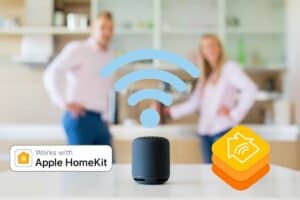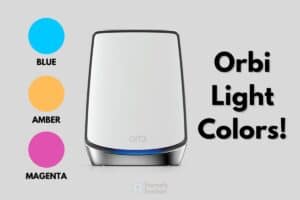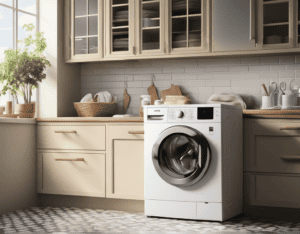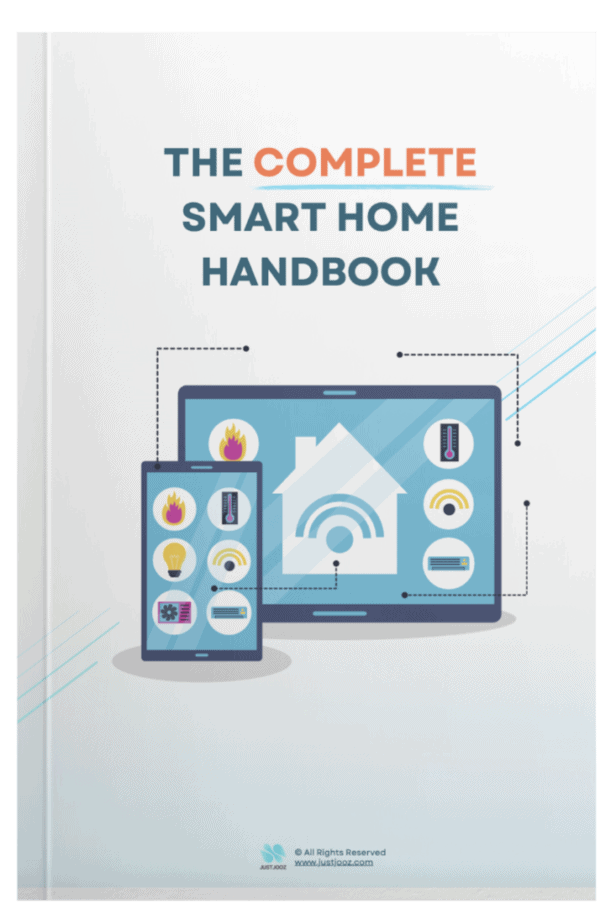How to Clean Vinyl Floors: 7 Tips and Tricks You Must Know!
We’re reader-supported; we may earn a commission from links in this article.
If you’re in search of an effortless and effective method to clean your vinyl floors, this blog post has got you covered!
Whether you have no-wax flooring or tile floors, our comprehensive guide will provide you with all the necessary steps and tips on how to get rid of surface dirt, prevent stains, remove scuff marks, and keep your vinyl floor cleaner than ever before.
In this blog post, we’ll be discussing everything there is to know about deep cleaning vinyl floors.
Read on for more information!
Importance of Cleaning Vinyl Floors
The importance of cleaning vinyl floors cannot be overstated.
Regular maintenance and upkeep will keep them looking beautiful, extend their life span, and prevent slips and falls.
Dirt buildup can cause discoloration, scratches, or even permanent damage if left unchecked.
For deep cleaning jobs, it’s best to use a commercial cleaner specifically designed for no-wax floorings.
If you don’t have any special cleaners on hand you can mix your own using rubbing alcohol mixed with baking soda and distilled white vinegar in equal parts.
To begin the process start by dust mopping the entire area to remove surface dirt followed by dry mopping with a microfiber cloth for an extra layer of cleanliness.
Next wet mop the area using either your homemade solution or store-bought cleaner depending on what is available then rinse thoroughly with warm water afterward to ensure all residue has been removed from the surface.
When finished allow time for it to air dry completely before walking across it again which should take around 15 minutes at most but could vary based on humidity levels in your home environment so plan accordingly.
For preventative maintenance, safeguard your vinyl floors from dents, scratches and damage by placing felt-backed floor protectors beneath each leg of heavy furniture pieces such as couches or beds.
Additionally, put doormats at every entrance point into high foot traffic areas like kitchens or living rooms to help keep dirt out and maintain the newly cleaned look of your vinyl floors.
Be proactive and save yourself some effort in the future by using this approach.
With regular care and attention, there is no reason why your vinyl floors should not last many years without needing replacement due to wear and tear.
Be sure to mop frequently using appropriate solutions as needed throughout the year, plus follow the tips outlined above so they will stay looking brand new for a long time.
The importance of cleaning vinyl floors cannot be overstated as it helps maintain their appearance and durability. To ensure your vinyl flooring remains in top condition, here are some tips to help you clean it effectively.
Key Takeaway: Maintaining your vinyl floors is essential to keep them looking great and extend their lifespan. Regular dust mopping, dry mopping, and wet mopping with appropriate cleaners and protectors beneath furniture legs will help prevent scratches and damage while doormats can capture dirt before it makes its way into high-traffic areas. With the proper care, you’ll be able to enjoy your newly cleaned vinyl floor for many years.
Tips for Cleaning Vinyl Floors
Vinyl floors are an attractive, low-maintenance option for many homes. Vinyl floors can be a long-lasting, low-maintenance choice for many households if looked after properly.
To keep your vinyl floor looking its best, here are some tips on how to clean it effectively:
1. Use Baby Oil
Use baby oil instead of wax polish which may cause buildup over time.
Wax polishes often leave behind residue that builds up over time and can make the floor look dull or dingy. Baby oil is less likely to cause this problem and will help restore shine without leaving any residue behind.
2. Avoid using scouring powders or ammonia-based products
Avoid using scouring powders or ammonia-based products on no-wax vinyl flooring as these can damage the surface of the material over time. For stubborn dirt, use a damp cloth with distilled white vinegar instead; this should be enough to remove most marks without damaging the finish of your flooring.
3. Use a dust mop or dry microfiber cloth
Utilize either a dust mop or dry microfiber cloth at least every few days for optimal results, as this will help pick up surface-level dirt that may otherwise go unnoticed until it becomes more difficult (or even impossible) to remove later on.
By taking these basic steps, you can guarantee that your vinyl floors stay glossy and spotless for a long time.
Protect against dents/scratches/damage via felt-backings/floor mats underfoot traffic zones etc., so that heavy furniture pieces don’t end up causing permanent damage by denting or scratching your beautiful new vinyl floors.
4. Doormats at each entry point
Doormats at each entry point into rooms with high foot traffic areas are also important for keeping out debris that could otherwise get ground into those hard-to-reach places between tiles where regular sweeping won’t do much good – plus they look nice too.
Key Takeaway: By following a few simple tips such as using baby oil instead of wax polish, avoiding scouring powders and ammonia-based products, regularly sweeping or mopping with microfiber cloths and placing felt protectors under heavy furniture pieces, you can keep your vinyl floors looking their best for years to come. Don’t forget the doormats at entrance points too – they’ll help prevent dirt from getting ground into those hard-to-reach places.
Preventative Maintenance
When it comes to maintaining vinyl floors, preventative measures are key. Taking preventative measures will help you avoid future difficulties and costs.
1. Sweep Regularly
Make sure to keep your vinyl flooring in top condition by sweeping it regularly or using a robotic mop like Samsung’s JetBot Mop to scoop up dirt and debris before they have the chance to settle into cracks and crevices.
2. Protect Your Flooring
Another way to protect your flooring is by placing floor protectors underneath each leg of heavy furniture pieces such as tables or couches.
This will help prevent dents and scratches from forming due to pressure points on delicate materials like wood veneer.
3. Ensure Heavy Furniture Have Floor Protectors
Finally, to avoid any dents and scratches forming due to pressure points on delicate materials like wood veneer, make sure heavy furniture pieces have floor protectors underneath each leg of them and install doormats at every entrance point into rooms.
This is so that kids’ and pets’ shoes can be taken off before entering the house.
Preventative maintenance is essential for keeping your vinyl floors looking like new, so taking the necessary steps to protect them can go a long way.
Restoring shine and glossiness requires more effort than prevention but with some simple techniques, you can make even the dullest of vinyl floor surfaces look brand new again!
Key Takeaway: To keep vinyl floors looking their best, invest in preventative maintenance such as placing floor protectors under heavy furniture and installing doormats at entrance points. Additionally, opt for distilled white vinegar when wet mopping instead of commercial cleaners to avoid any damage over time. By doing this, you’ll be able to enjoy beautiful vinyl floors with minimal effort.
Restoring Shine/Glossiness
Restoring shine and glossiness to vinyl floors is possible but requires some special care. Baby oil can be used instead of wax polish which may cause buildup over time.
When cleaning no-wax vinyl flooring, avoid using scouring powders or ammonia-based products as these could damage the surface.
For more thorough cleanings, dampen a microfiber mop head with warm water and add a few drops of dish soap and a soft broom to remove any scuff marks.
Then wring out the excess liquid before gently wiping across the entire area, covering the entire section, not just small spots here and there, otherwise, you risk creating streaks throughout the other parts of the room too.
Finally, once done rinse off any solution or soapy residue left behind and wipe away remaining moisture with a microfiber cloth.
Let air dry completely before walking all over freshly cleaned surfaces and enjoy the fresh new look and feel in your home space now, thanks to restored shiny glossy finishes on newly renovated vinyl floors today, tomorrow, and for years to come.
Restoring shine and glossiness to vinyl floors can be achieved with a few simple steps, such as using commercial sealants.
Now that the fundamentals have been gone over let’s take a look at the various kinds of commercial sealants which can be employed to restore gloss and luster to vinyl flooring.
Commercial Sealants
Commercial sealants are an effective way to restore lost shine and glossiness to no-wax vinyl flooring.
However, harsh cleaners containing abrasives such as scouring powders or ammonia-based products should be avoided as these could potentially ruin the finish entirely, leaving behind unsightly blemishes.
Instead, opt for milder cleaning solutions like rubbing alcohol mixed with baking soda or a solution of distilled white vinegar and water.
Finally, if all else fails there are commercial sealants available specifically designed for no-wax floors which can help bring back the original luster while protecting against future damage caused by foot traffic etcetera.
Consider commercial sealants as a possible solution if you want to restore the shine and protect against future damage.
FAQs in Relation to How to Clean Vinyl Floors
What is the most effective way to clean vinyl floors?
The most effective way to clean vinyl floors is by using a mild detergent, warm water and a soft cloth or mop.
Begin by sucking up any dirt and particles with a vacuum cleaner. Next, mix one cup of mild detergent with one gallon of warm water in a bucket.
Dip your cloth or mop into the mixture and wring out excess liquid before cleaning the floor in sections from top to bottom.
After cleaning each section, use another dampened cloth to rinse any remaining residue from the surface before allowing it time to dry completely.
What is a good cleaner to use on a vinyl floor?
When cleaning a vinyl floor, it is important to use the right cleaner. For best results, look for an all-purpose or multi-surface cleaner that is specifically designed for vinyl floors.
Avoid using harsh chemicals like bleach and ammonia, as these can damage the surface of your flooring over time.
When mopping, use only warm water and avoid scrubbing too hard with abrasive materials, which could cause scratches on the surface. Finally, always dry thoroughly after cleaning so there are no streaks left behind.
What can ruin vinyl flooring?
Vinyl flooring can be damaged in a variety of ways. Excessive exposure to direct sunlight, moisture, and dirt can cause fading or discoloration.
Scratches from furniture legs or pets’ claws may also mar the surface of vinyl floors. Additionally, some household chemicals, such as bleach and ammonia, can damage the material if not cleaned up quickly enough.
Maintaining the cleanliness and dryness of your vinyl flooring is essential to preserving it, while also keeping any harsh chemicals away.
Will vinegar damage vinyl floors?
No, vinegar will not damage vinyl floors. When diluted with water, vinegar can be an effective cleaning agent for vinyl floors if used in moderation.
However, if too much vinegar is used or it is left on the surface without being wiped away, it may cause discoloration or a residue that could eventually lead to deterioration of the flooring material over time.
It’s best to use a mild detergent specifically designed for vinyl floors when cleaning them instead of relying solely on vinegar.
Conclusion
Cleaning vinyl floors can be a daunting task, but with the right preparation and cleaner, you can easily maintain your floor’s original shine.
By utilizing the proper steps, you can guarantee your vinyl flooring is pristine and attractive for a long time.
Don’t forget to regularly sweep or vacuum up any dirt before it has time to accumulate on the surface of your clean vinyl floors using the best vacuum for vinyl floors!

Justin Chia
Justin is the author of Justjooz and is a data analyst and AI expert. He is also a Nanyang Technological University (NTU) alumni, majoring in Biological Sciences.
He regularly posts AI and analytics content on LinkedIn, and writes a weekly newsletter, The Juicer, on AI, analytics, tech, and personal development.
To unwind, Justin enjoys gaming and reading.







